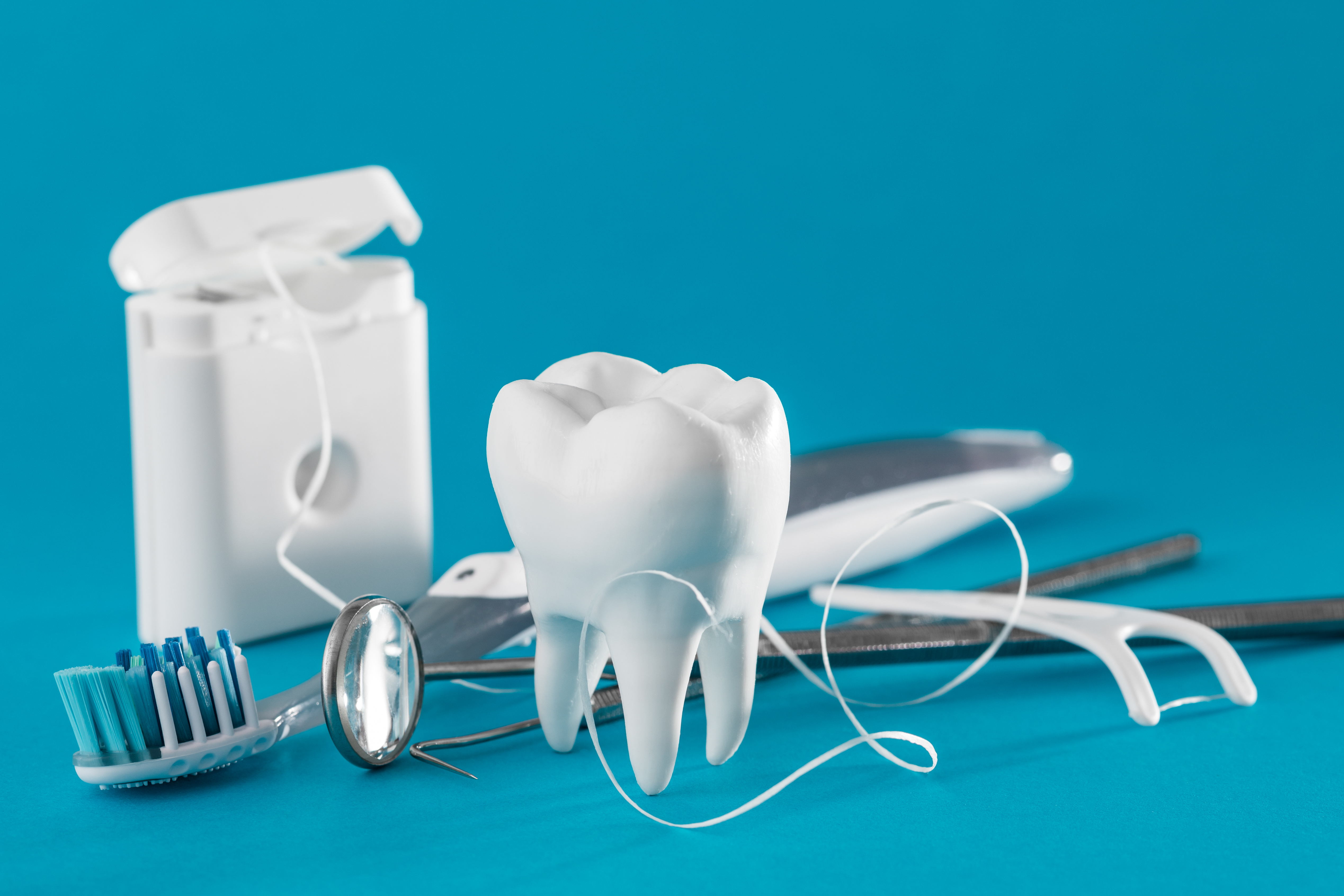Mistake #1. Brushing Too Hard
Brushing your teeth with excessive force might seem like a surefire way to get them clean, but it can actually do more harm than good. Aggressive brushing can wear down enamel, irritate your gums, and lead to sensitivity.
Instead, use a soft-bristled toothbrush and gentle, circular motions to effectively remove plaque without causing damage. A study shows that when it comes to brushing, a lighter touch within 2 minutes is effective enough to remove plaque.
Mistake #2. Neglecting to Floss
Many people skip flossing, thinking that brushing alone is sufficient for oral hygiene. However, flossing is essential for removing plaque and food particles from between your teeth and along the gum line—areas your toothbrush can’t reach. Neglecting to floss can lead to gum disease, cavities, and bad breath.
This study reports that older adults who floss regularly experience significantly less oral disease compared to those who do not floss. Over a 5-year period, flossers had less gum disease, fewer cavities, and fewer lost teeth.
Mistake #3. Choosing the Wrong Toothbrush
Toothbrushes with hard bristles can damage your enamel and gums, while brushes that are too large or too small might not clean effectively. Choose a toothbrush with soft bristles and a size that comfortably fits your mouth.
The design of a toothbrush’s bristles significantly affects its ability to remove plaque, too. There’s evidence that a toothbrush with a zig-zag bristle design is more effective at removing plaque than one with a flat bristle design. Also, replacing your toothbrush every three to four months, or sooner if the bristles are frayed, is also crucial for maintaining effective cleaning.
Mistake #4. Ignoring Your Tongue
Dentists who prioritize preventive care are keenly interested in how mechanical oral hygiene techniques affect the levels of microorganisms in saliva, particularly mutans streptococci and plaque. Saliva starts out sterile from the salivary glands, but once it’s in the mouth and spat out, it contains over 108 cultivable bacteria per milliliter.
This means that a large number of bacteria from the mouth’s surfaces end up in saliva. Different surfaces contribute bacteria to saliva based on their size, with the tongue making the largest contribution and teeth possibly only contributing about 5%.
So, make sure to include tongue cleaning as part of your oral hygiene routine by gently brushing or scraping your tongue to remove bacteria and freshen your breath.
Mistake #5. No Regular Dental Check-ups
Skipping regular dental check-ups is a common mistake that can have serious consequences for your oral health. Even if your teeth look and feel fine, professional dental cleanings and exams are essential for detecting issues early on, such as cavities, gum disease, and oral cancer.
Dentists can also provide personalized advice on oral hygiene practices and catch problems before they become more serious and costly to treat. Even though everything seems just fine, it’s always better to schedule and attend regular dental appointments (ideally every six months) to get your teeth and mouth cleaned and all checked.
Mistake #6. Overlooking the Importance of Mouthwash
Mouthwash can reach areas of the mouth that brushing and flossing alone might miss, helping to kill bacteria and freshen breath.
Certain mouthwashes contain antibacterial agents like chlorhexidine or cetylpyridinium chloride, which actively kill harmful bacteria in the mouth. By reducing the bacterial population, these mouthwashes can help prevent the formation of plaque, tartar, and subsequent oral health issues.
Some mouthwashes contain fluoride, a mineral that strengthens tooth enamel and helps protect against decay. Fluoride mouthwashes provide an additional layer of defense against cavities, particularly in areas where fluoride levels in the water supply are low.
This article was written for WHN by Andre Oentoro who is an SEO consultant for MGK Asia, an elevator and excavator manufacturer.
As with anything you read on the internet, this article should not be construed as medical advice; please talk to your doctor or primary care provider before changing your wellness routine. This article is not intended to provide a medical diagnosis, recommendation, treatment, or endorsement. These statements have not been evaluated by the Food and Drug Administration.
Opinion Disclaimer: The views and opinions expressed in this article are those of the author and do not necessarily reflect the official policy of WHN/A4M. Any content provided by guest authors is of their own opinion and is not intended to malign any religion, ethnic group, club, organization, company, individual, or anyone or anything.
Content may be edited for style and length.
References/Sources/Materials provided by:
https://pubmed.ncbi.nlm.nih.gov/37036381/
https://www.ncbi.nlm.nih.gov/pmc/articles/PMC7375740/
https://www.ncbi.nlm.nih.gov/pmc/articles/PMC10112751/
https://www.researchgate.net/publication/303859687_Tongue_cleaning_methods_A_Review




